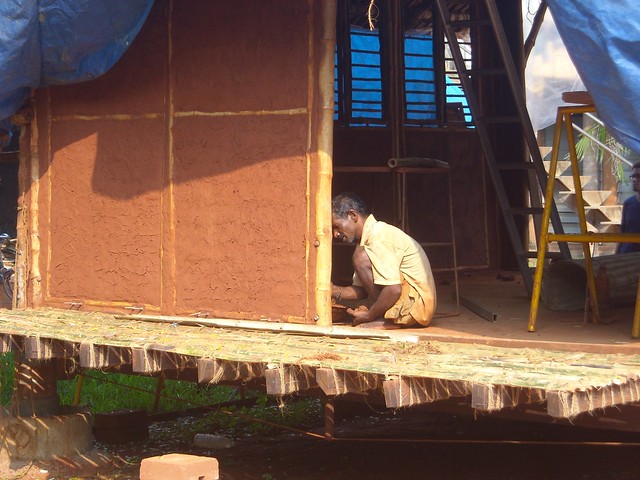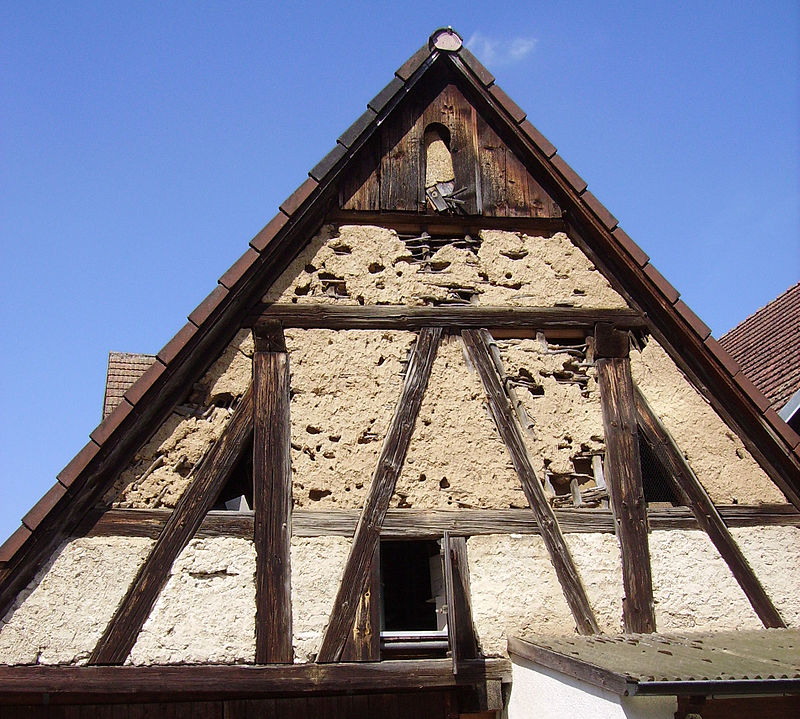THREE: JOINTS OF MUD, DAUBING AND PLASTERS
 |
| Wattle and Daub construction |
In locations where building stones or wood and grass products (bamboo,
Cain, long straws) are available, Mud has been used as joint filler, daubing,
layering or plastering material. In Himalayan range stone boulders have been
used for creating walls. These were internally and superficially packed with
mud or plastered. (Though the boulder walls, in spite of packing and joint
filling remain unstable in earthquakes -are now banned.) In stone masonry the
joint filling or external packing (lining) with mud, stops cold winds, rain-water penetration and insects proliferation.
 |
| Mud packed stone wall |
Clay daubing is mud plaster over woven mats of bamboo, grasses etc. fixed
over frames. Similarly wood, metal and other lattices are used to hold a layer
of mud. This method creates, comparatively a thinner, and so a lighter wall
structure. The framing structure provides the load-bearing capacity and
lateral stability. Often inner partitions of Mud wall houses are made by this
method.
WATTLE and DAUB is a technique of creating both, in-situ walls and pre-cast
panels that are attached to the framing of the building. It has been used since
neolithic period. A woven lattice of wooden strips called wattle is daubed on
both sides, with plastic slurry of mud. As the mass is very thin, it dries out fast
with very little cracking. The surface is re-daubed on both sides to refill the
residual cracks and achieve a smooth finish.
 |
| Daubing left out to form opening |
The mud requirements are small, so select quality mud is used. It is often
rotted with dung, vegetation waste to increase the fibre content. Other binders
mixed with the mud include lime, jaggery, gums, polymers, etc. For the second
coat, materials like chalk, talc, iron oxides are used to add whiteness or colour.
Wattle is traditionally made by weaving thin branches or thin slats between
upright stakes. The wattle made as loose panel forms in-fill plates. Nowadays
to avoid white ants attacks, stainless steel, aluminium and polyester extruded
longs and lattices are used in place of wood-based wattles.
 |
| Clay daubing thin wall |


No comments:
Post a Comment